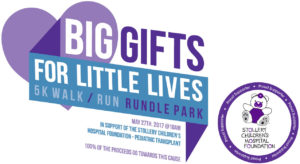
With 3 days before the race, this is blog 5 of 5 to help you prepare!
It is now 3 days before the race and some of you may be nursing an injury. You have paid your race fees, perhaps even picked up your race package. You may have promised your friends or family that you will meet them at the race so that you can walk the course or run the race together. However, you have been struggling with a nagging injury and your training has been greatly compromised. Should you run this Saturday or should you walk the course instead or do you cancel altogether?
Hopefully, you do not have to make this difficult decision on your own; instead, the health care provider with whom you have been working should be able to guide you in your decision-making. Regardless, it is always a difficult decision especially when you have invested time, energy and money training for a race which deep down, you really wish you could participate.
Return to sport or race decisions is rarely an easy decision. If the athlete has a coach, we will oftentimes recruit their assistance to discuss the pros and cons of whether the athlete should compete or withdraw from an event or competition when the athlete is not at his or her best. Is there a high risk of harm to the athlete should he or she compete? Or is the injury mild enough that no harm will result but only hurt? How important is this competition? What would be the consequences to the athlete or to a team if the athlete were to withdraw? As you can see, such decisions are best made with those who have invested a relationship with the athlete.
When treating an injury, whether it involves a joint, muscle or tendon, the overwhelming evidence supports optimal loading as the most effective way to build its strength and improve its physical capacity and resiliency. The goal is to find a level of stress through targeted exercises to stimulate healing and which subsequently reduces pain by raising the tissue’s pressure pain threshold. One of the ways to do so is to use pain as your guide. Let’s use the 0-10 Visual Analogue Scale as an example with 0 being painfree and 10 being “call 911”- the worst you can imagine.
Zone 0-3: During your runs, you are aware of your symptoms but it is mild enough that it does not affect your performance.
Zone 4-6: Your symptoms are bad enough that it is negatively affecting your performance; you can feel pain with every step. You know you should stop because if you don’t, the hurt you are feeling will very quickly turn to harm.
Zone 7-10: The pain is sharp and excruciating and you know that continued running is now creating more than just hurt but you are now causing tissue harm.
As a general rule, if your pain remains in zones 0-3 throughout your training session and does not increase from this zone a few hours after your workout and if there is no increase in morning stiffness and pain the next day, then you can continue to train or enter that race. The loads are appropriate for the physical capacity of the healing tissue.
However, if your pain was in zone 0-3 during the activity but increases to zones 4 or higher afterwards especially at night and there is an increased amount of morning stiffness the next day, then that specific activity or workout was detrimental to the healing of that tissue. The loads you sustained were way beyond the physical capacity of the healing tissue which disrupts rather than promotes tissue repair.
As best as you can, after the race or competition, continue to work with your health care provider to restore your pain to 0 so that you do not constantly live and exercise in that boundary between zones 3 and 4.
Come Saturday, remember to arrive early for your race, warm up, perform your dynamic movements, avoid passive or static stretching, visit the Elevation Physiotherapy tent for some roller massage to your muscles to reduce their stiffness, run some strides, do your drills and then give it all you got!


After the race, feel free to return to the Elevation Physiotherapy tent for a longer duration of roller massage to relax your muscles and share with us the story of your race. Karen and I are looking forward to seeing you this Saturday! Have a great Zone 0-3 Race!
